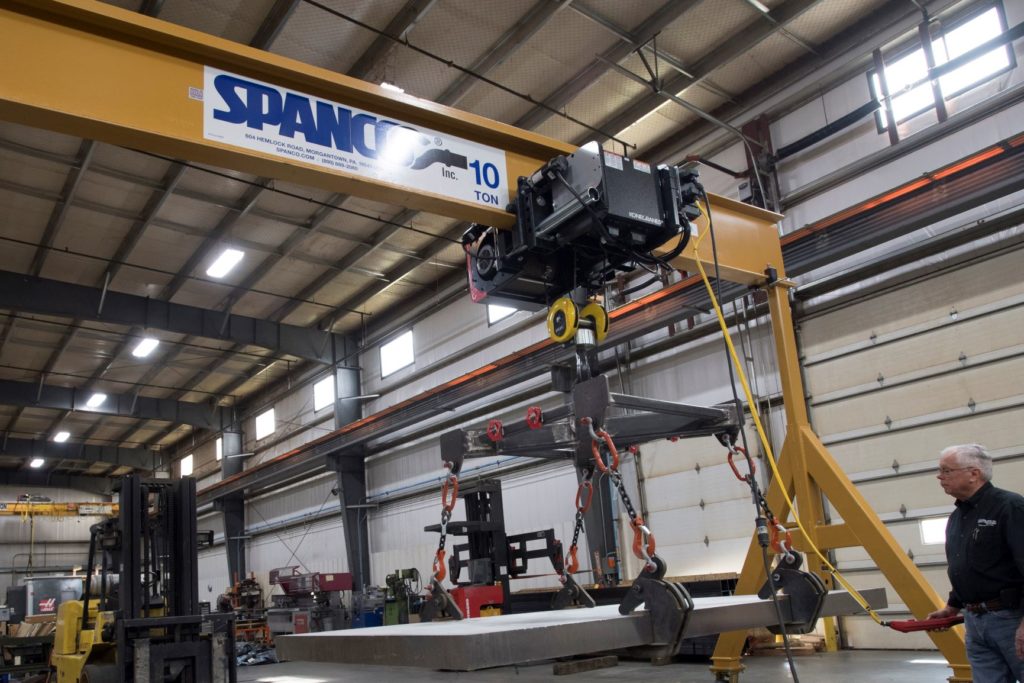
Safe Lifting Practices: Below-the-Hook Devices
Jul 13, 2020
Below-the-hook lifting devices are a crucial part of many material handling operations. A below-the-hook lifting device is any tool designed to attach a load to a crane or hoist and secure that load so it can be lifted and moved safely. They are typically used to lift and carry loads that are difficult to handle with traditional wire rope, chain, or synthetic slings.
Below-the-hook lifting devices include magnets, lifting beams, grapples, vacuum lifters, and other types of specialized equipment. It is also common to find custom engineered devices that are designed for specific applications. These below-the-hook devices are designed to fit specific materials or components to make lifting operations safer and more efficient.
Why Use a Below-the-Hook Device?
There are two primary benefits to using a below-the-hook lifting device: safety and efficiency. Below-the-hook devices make lifting loads safer by holding a load in the most secure way possible. These devices are selected based on the requirements of a specific load or load type for a specific application. They are used for specialized tasks, so they are designed to provide the highest degree of control possible over a load, which allows operators to handle the load more safely.
When lifting a load with a unique shape, size, or center of gravity, it can be difficult to secure the load with traditional slings, which could move or slip unexpectedly. If the sling is not completely secure, the load may shift, leading to unsafe conditions that put workers at risk or damage equipment. Below-the-hook devices can replace or supplement traditional slings for unconventional loads to eliminate the chance that the load could slip. Because below-the-hook devices are selected for specific lifting tasks, the load is always secure and safe, and workers and equipment are protected.
Additionally, unconventional loads can take a longer time to rig safely. Uniquely shaped or sized loads require careful consideration when lifting with conventional slings. It may be difficult to find a location where slings can be attached to a load, which can slow down operations. It can also take longer to move the load because the operator might have to move more slowly to avoid shifting the load. Below-the-hook devices reduce rigging time because their specialized design means you don’t have to take the time to find the best rigging solution. You can improve efficiency by quickly attaching the load in the safest, most secure way possible.
Specialized lifting devices can also help prevent damage to lifting equipment. For example, sheets of material often require protective equipment to prevent the sharp corners from damaging traditional slings. Even with protection, sharp corners have the potential to deform a sling permanently. Sheet lifters use claw-like components to grab sheets of material by the edges, so that the load, the lifting device, and your slings are protected from damage. Other types of below-the-hook devices, such as magnet lifters, vacuum lifters, and more, provide similar protection for many other types of loads.
Not every application requires below-the-hook lifters, but you can find an appropriate lifting device for nearly any job. Coil hooks, griping lifters, lifting and spreader beams, and other devices can be used for many specialized lifting tasks. Many companies also provide custom-designed devices for applications that don’t fit more standard designs.
Below-the-hook lifters are a great way to improve lifting operations when used in appropriate applications. If you think your application would benefit from the use of a below-the-hook device, many rigging suppliers can help you find the right equipment for any job. You can also consult ASME B30.20 for safety standards, inspection, maintenance, and operation information regarding below-the-hook devices.
Categories
Share this post
Contact us
Looking for the perfect fall protection equipment? Let us help!
